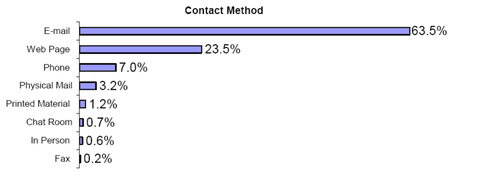
America's Big Problem
Courtesy of i-SAFE
- Last year alone, close to 10 million Americans had their identities stolen by criminals
- Identity thieves made away with over $50 billion in false transactions
Identity theft is the fastest-growing crime in the United States with close to 10 million people victimized each year. Identity theft is when someone takes your personal information (name, address, credit card of social security number) and uses that to open up new credit cards, buy new stuff, or borrow money from the bank. For victims of identity fraud, it may mean months of headaches trying to recover the money lost and repair credit. An identity thief can damage a victim's financial reputation for years.
|

Who are you? |
Proving your identity online is a slightly different process, and sharing some of your personal information is necessary for many transactions. Your job is to determine whether the request for your information is coming from a reputable source or not.
- Do a background check: look for address and telephone number and call to talk to a company representative
- Look for a privacy policy and review it
- See if the web site is encrypted, another layer of security for you (you'll be able to tell in the address bar if it reads "https" and a tiny padlock appears at the bottom of the screen
- Make sure your transactions are secure; afterwards make sure to logout, clear your cache or close your browser window before browsing again
|

|
 
Identity Theft and Phishing Scams
|
A phishing scam has the purpose of obtaining your valuable personal information— such as passwords, credit card and bank account information —by impersonating a company you deal with and trust. Most phishing scams copy the contents and appearance of bank and credit card websites so that you think you are merely updating your account information when you are actually giving it to a con artist. Some of these 'spoofs' are so convincing, it can be difficult to distinguish a scam from the real thing. However, here are some signs that can help you identify a scam:
- The email does not address you personally, but starts with a generic address such as "dear customer."
- The URL provided looks like it belongs to the company you trust, but when you roll over it with your mouse, you see that the actual link is not the same.
- There is an urgent tone to the request, as though drastic measures will be taken against you if you do not respond almost immediately.
- You are asked to submit information the company should already have.
To learn more we recommend:
The Anti-Phishing Working Group
Microsoft: Help Identify Phishing Scams
|
 
|
According to studies done by the Internet Fraud Complaint Center, the United States overwhelmingly suffers from the most cases of Internet fraud and identity theft. In the U.S. in 2004, over 87% of fraud attempts were conducted over the Internet, with 63.5% of cases occurring over email.
Internet fraud perpetrators and victims (complainants) have a smaller presence in the following countries:
Top 10 Countries for Perpetrators of Internet Fraud
Represents % of total perpetrators where country is known
|
2001
- United States: 87.6%
- Nigeria: 2.7%
- Canada: 2.5%
- Romania: 0.9%
- United Kingdom: 0.9%
- South Africa: 0.5%
- Australia: 0.4%
- Indonesia: 0.3%
- Togo: 0.3%
- Russia: 0.2%
|
2004
- United States: 78.75%
- Canada: 3.03%
- Nigeria: 2.87%
- United Kingdom: 2.32%
- Italy: 2.01%
- Greece: 1.04%
- Romania: 0.92%
- France: 0.86%
- Spain: 0.6%
- China: 0.58%
|
|
Top 10 Countries – Internet Fraud Complainant Represents % of total complainants where country is known
|
2001
- United States: 93.4%
- Canada: 2.2%
- United Kingdom: 1.0%
- Australia: 0.5%
- Japan: 0.2%
- Germany: 0.2%
- Singapore: 0.2%
- Indonesia: 0.1%
- New Zealand: 0.1%
- South Africa: 0.1%
Source: Internet Fraud Complaint Center (IFCC)
|
2004
- United States: 92.34%
- Canada: 2.94%
- Australia: 0.74%
- United Kingdom: 0.50%
- Germany: 0.18%
- Italy: 0.17%
- Singapore: 0.16%
- France: 0.15%
- Japan: 0.15%
- Netherlands: 0.13%
|




